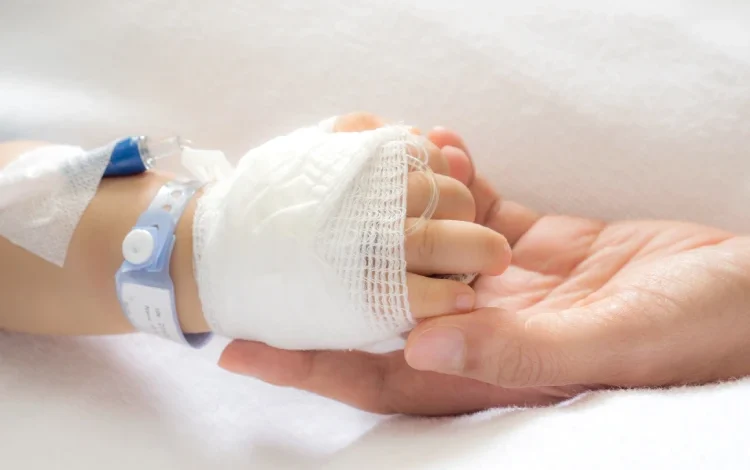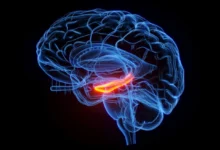CRISPR-Based Gene Editing Saves Infant with Rare Metabolic Disorder in World First
Doctors Use CRISPR Base Editing to Correct Rare CPS1 Mutation in a Personalized Therapy

In a medical first, a six-month-old infant with a rare and often fatal genetic disorder has been successfully treated using a fully personalized gene-editing therapy. The case marks the first known use of base editing—a next-generation CRISPR technique—to treat a human patient with a custom-built treatment.
The patient, KJ Muldoon, was diagnosed shortly after birth with carbamoyl phosphate synthetase 1 (CPS1) deficiency, a urea cycle disorder that disrupts the body’s ability to eliminate ammonia. The condition, which affects about 1 in 1.3 million newborns, can cause rapid and irreversible brain damage if untreated.
A Precision-Driven Approach to a Rare Mutation

CPS1 deficiency is caused by mutations in the CPS1 gene, and in KJ’s case, the mutation was both extremely rare and severe. The standard approach to treatment involves strict dietary control, ammonia-scavenging drugs, and often liver transplantation. However, the underlying gene defect remains unaddressed by these treatments.
Researchers at the University of Pennsylvania and Children’s Hospital of Philadelphia developed a novel approach: base editing, a refined version of CRISPR that enables the precise conversion of a single DNA base into another.
This method significantly reduces the risk of unwanted edits or large-scale genetic disruptions, a limitation of earlier CRISPR systems.
The therapy was designed specifically for KJ’s unique mutation, requiring a rapid and collaborative development effort between academic labs, regulatory agencies, and biotech companies. The gene-editing components were delivered to the liver using lipid nanoparticles—an established delivery platform also used in mRNA vaccines.
Condensed Timeline Reflects Technical Agility
Typically, gene therapies take years to develop, test, and approve. In this case, the therapy was designed, validated in lab models, and prepared for clinical use in just six months.
That timeline was made possible through emergency-use regulatory flexibility granted by the U.S. Food and Drug Administration (FDA), as well as public-private partnerships that provided key resources at cost or through in-kind support.
The first low-dose infusion of the therapy was administered in early 2024. The treatment was monitored closely for efficacy and safety, with a focus on metabolic stability and ammonia levels. Within two weeks, clinicians observed an increase in KJ’s protein tolerance, an indirect marker of restored urea cycle function.
Following two additional doses, doctors reported sustained metabolic stability, reduced need for supportive medications, and no observed adverse effects related to the editing process.
Scientific and Regulatory Significance
The successful case demonstrates the clinical viability of “n=1” gene-editing therapies—treatments developed for a single patient with a specific mutation.
According to Dr. Kiran Musunuru, the lead researcher and a professor of cardiovascular medicine at Penn, the base-editing construct corrected the pathogenic variant with minimal off-target activity in lab testing, and the child’s clinical response aligns with that prediction.
This approach may serve as a blueprint for treating other ultra-rare genetic disorders. The core components of base editing can be reused, with the targeting element customized for each patient’s specific mutation. This modularity could dramatically reduce the development time and cost for future therapies.
Regulators, including FDA official Dr. Peter Marks, have expressed cautious optimism. Marks described the case as “proof-of-concept” for personalized genomic medicine, while emphasizing the need for long-term monitoring and further validation before broader adoption.
The Road Ahead
KJ remains under medical supervision but is showing normal development for his age. If progress continues, he may soon be discharged from the hospital—an outcome rarely seen in severe cases of CPS1 deficiency without a liver transplant.
While this therapy was created specifically for one patient and will not be used for others, it highlights a path forward for the estimated 30 million Americans affected by rare genetic conditions.
Researchers involved in the case stress that such interventions must be backed by rigorous preclinical data and clear ethical oversight. But for now, KJ’s case represents a tangible milestone: the merging of CRISPR science, clinical urgency, and regulatory flexibility to deliver a treatment that would not have been possible just a few years ago.








